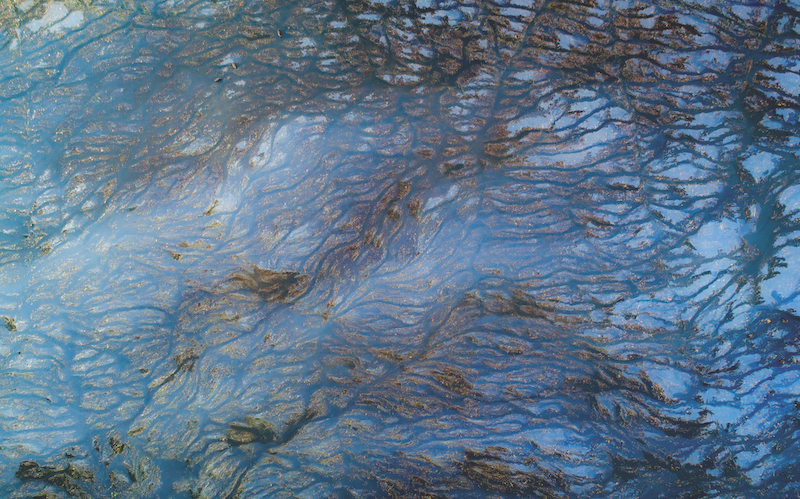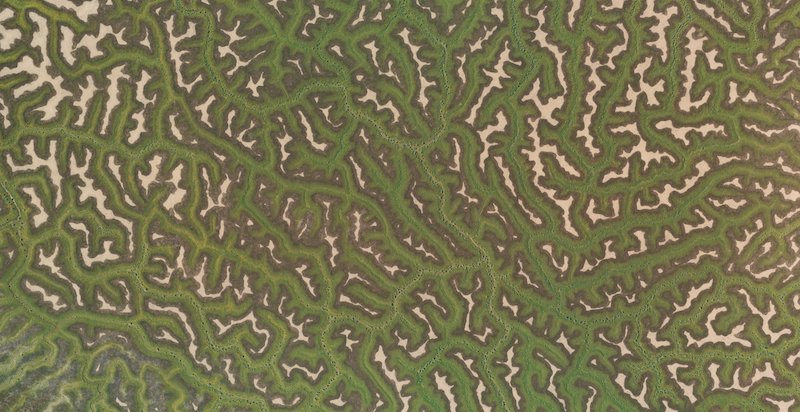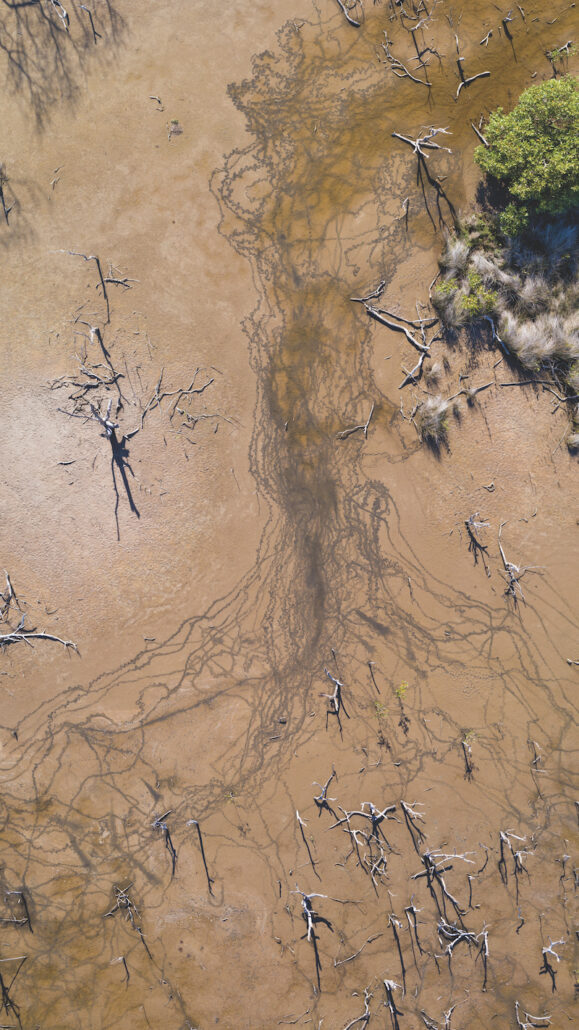While many artists create patterns in their works, Grafton-based artist Stu Murphy chooses to go beyond the studio and find them. With a background in environmental science, his inclination towards capturing the Australian landscape seems “a natural fit” – the pun, of course, entirely intended.
The artist has not moved away from his vocation for the preservation of wetlands and rivers but rather has chosen to champion the protection of our environment through the medium of art. A three-time winner of the Australian Photography Awards, Murphy uses drone technology to scour the estuaries of northern NSW and further afield for naturally occurring patterns and lines. These images often look almost abstract, as unfamiliar as we are with seeing nature from such a high angle. With an artist’s eye, he diligently records meandering animal tracks, the ebb and flow of currents, and water navigating the land. These cycles of nature create a bounty of natural patterns, the earth weaving and tessellating as it shapes itself to the life that lives upon it.
There is something wonderous about the way that the earth balances order with disorder, creating fractals of line, waves of life and symmetrical motifs. Murphy’s practice is that of observation and appreciation, seeking out the patterns that have been provided, giving voice to the forgotten beauty of the planet.
Above: Stu Murphy, Glass, 2018. Giclee print on 300gsm cotton rag, 91 x 151cm. Courtesy: the artist.

Stu Murphy, Branching, 2018. Giclee print on 300gsm cotton rag, 101 x 152cm. Courtesy: the artist.

Stu Murphy, Windorah Puzzle, 2022. Giclee print on 300gsm cotton rag, 93 x 190cm. Courtesy: the artist.

Stu Murphy, Tiny Dancer, 2018. Giclee print on 300gsm cotton rag, 60 x 103cm. Courtesy: the artist.

